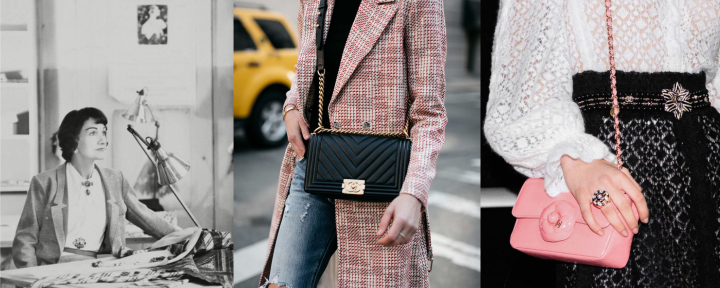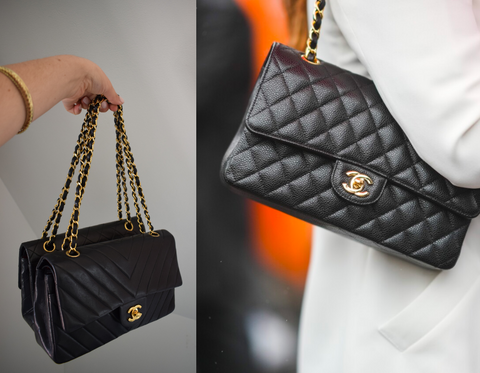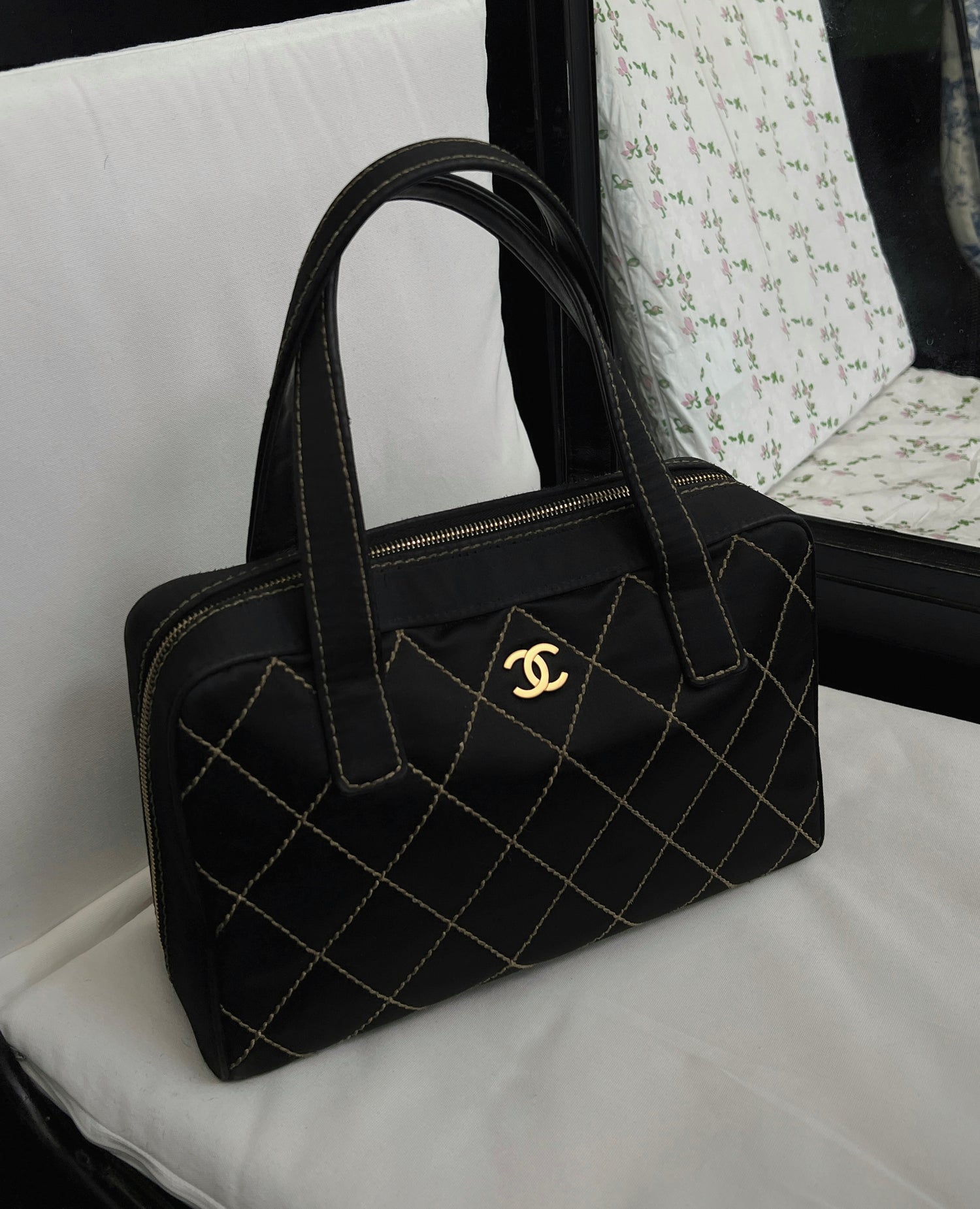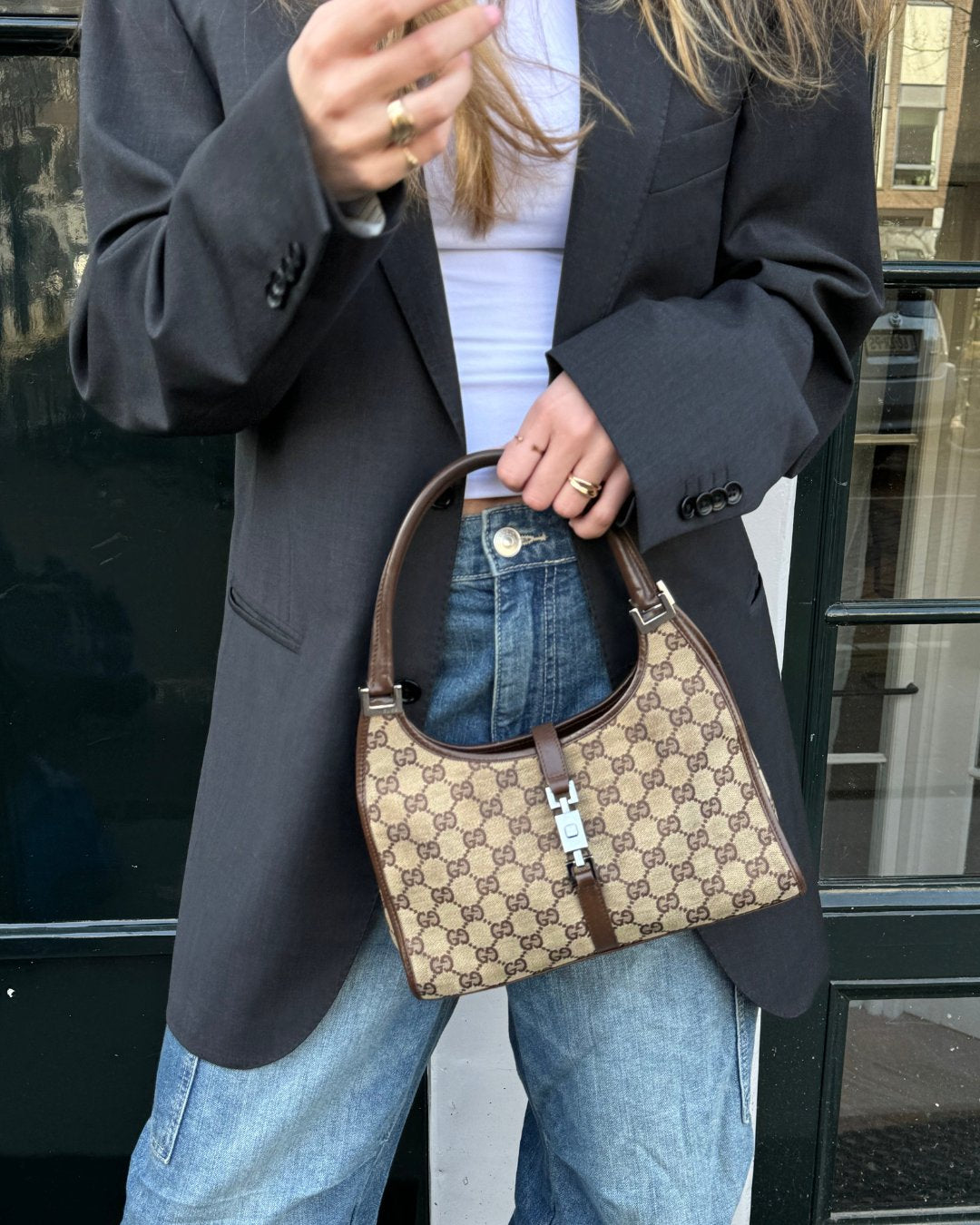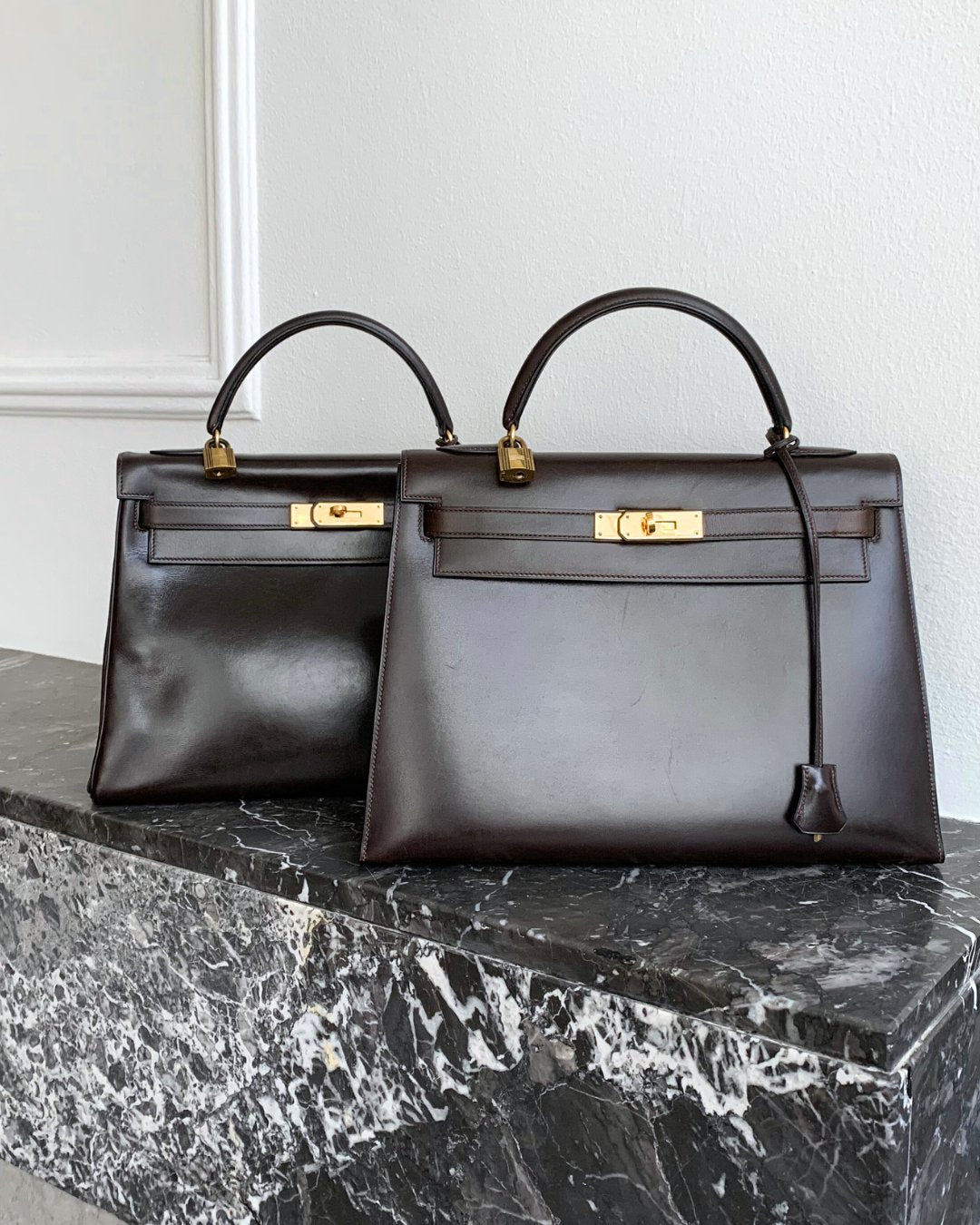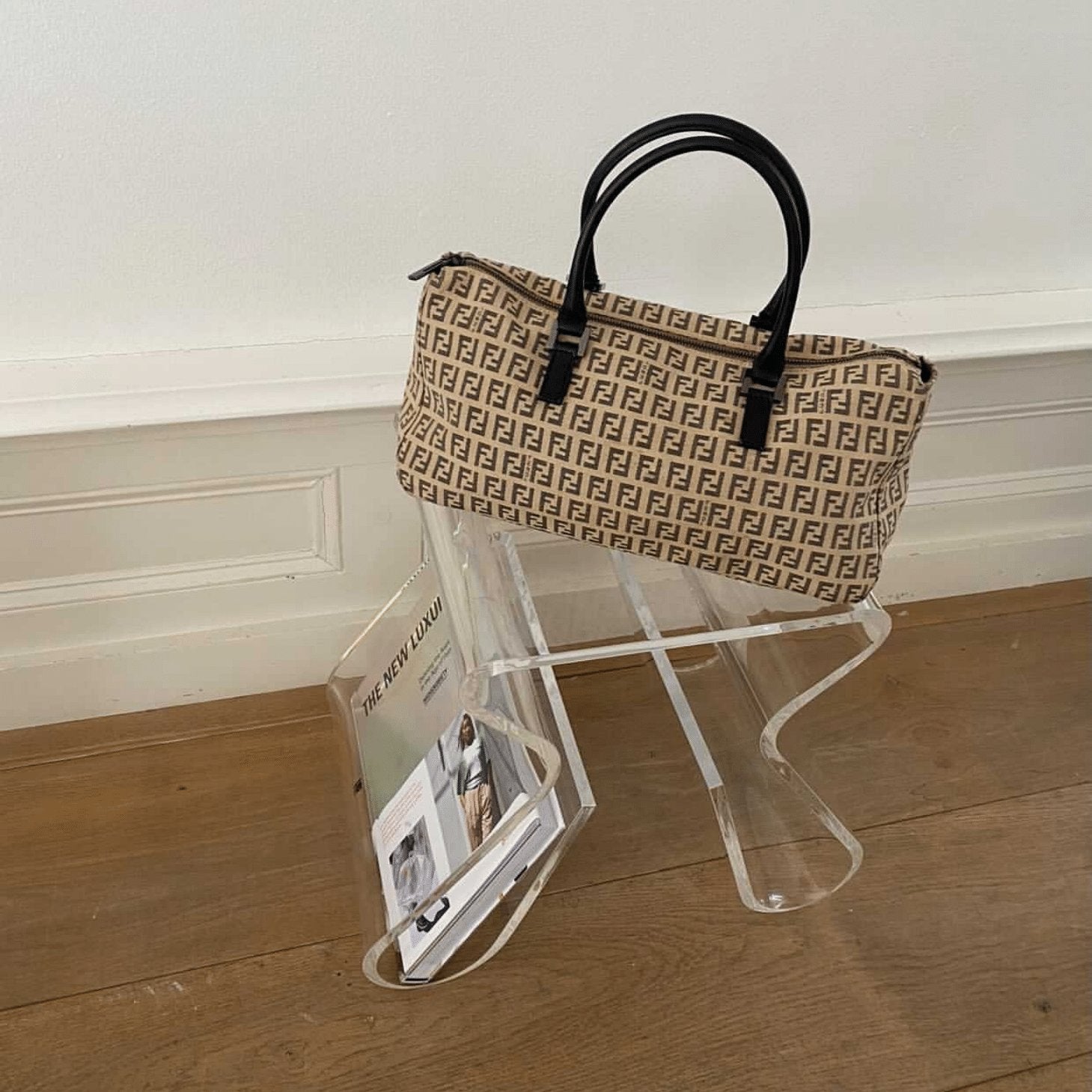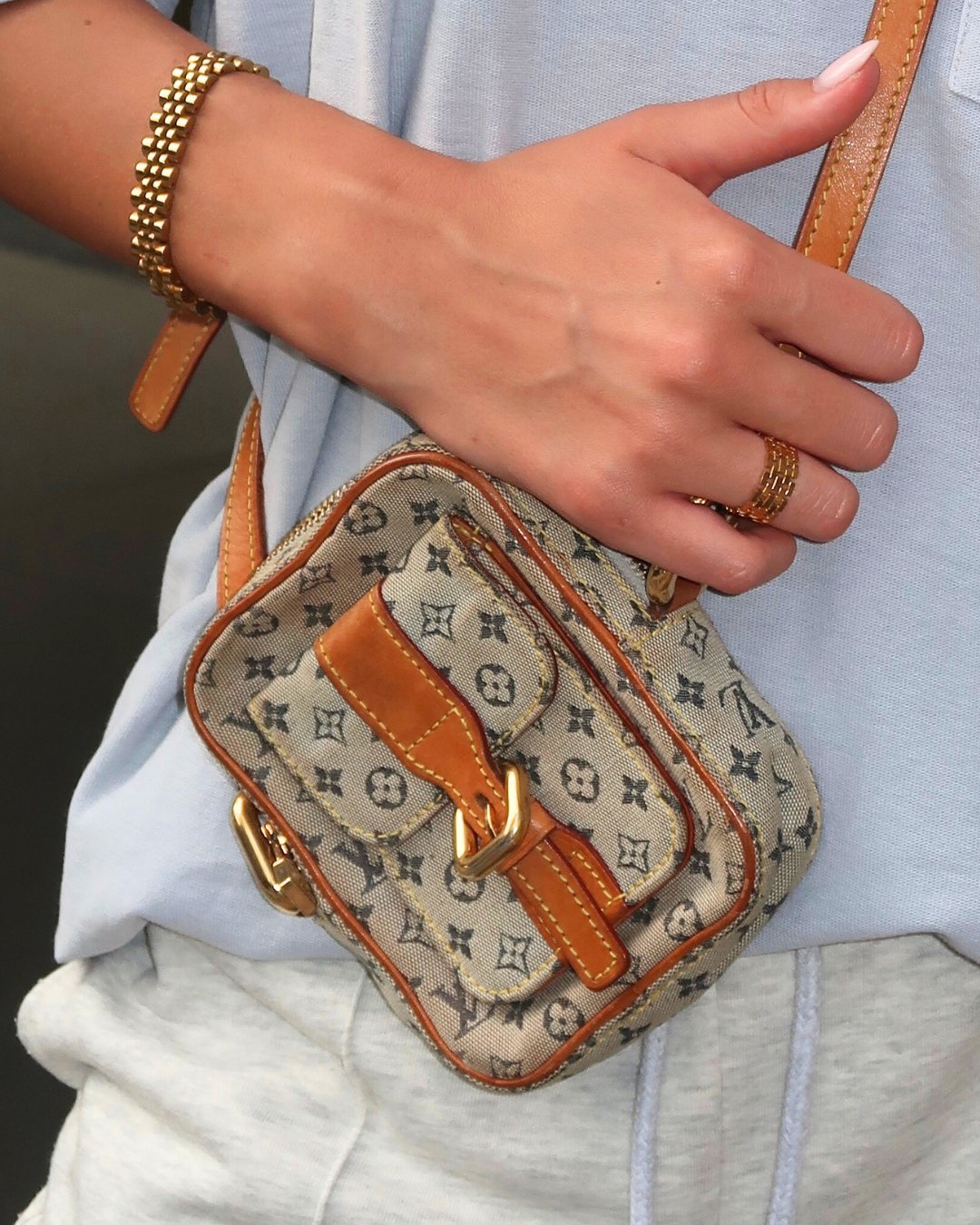Bags have always transcended their role as mere accessories; they are powerful symbols of style, elegance, and personal expression. In this article, we invite you to embark on a delightful journey through the captivating history and evolution of iconic Chanel bags. We will trace their transformative journey from classic designs to contemporary interpretations, delving into their enduring appeal.
Before the Chanel 2.55
We’re sure you heard about Chanel 2.55 as the “first Chanel purse” but before we delve into the details of these famous bag, let's take a step back in time.
This legendary Chanel bag has its origins in 1930s France, crafted with materials such as wool, leather, and steel. It’s clearly not the same but it has some details that we find on Chanel 2.55. You can find this “previous” Chanel 2.55 at the Met Museum, check it here and see the similarities and differences with respect to the next model. You can see this bag in The MET webpage.
Source: Pinterest
When Chanel 2.55 happened
In 1955, Coco Chanel staged a remarkable comeback at the age of 71 after World War II. Women's needs were changing, and Coco Chanel recognized the desire for freedom and convenience giving women the opportunity to have their hands free. To address this, she introduced a groundbreaking design by adding a long chain to the bag, allowing it to be worn on the shoulder. The iconic 2.55 was born, although it did not initially feature the now-famous logo (which was later designed by Karl Lagerfeld). The exterior of the first Chanel 2.55 bag was crafted with quilted wool, inspired by the horse races Coco Chanel frequented but you could also find ones made by leather. Chanel also presented the mademoiselle closure, which is very practical and atemporal with square shape. If you are lucky you can find a vintage Chanel 2.55 here.
Source: Chanel
A star is born: Chanel Classic Flap Bag
Some people don’t notice the differences but it’s important to note that the Chanel 2.55 and the Chanel Classic Flap Bag are not the same. In 1983, Karl Lagerfeld took the beloved 2.55 and elevated it to new heights with the design of the classic flap bag, also known as the Chanel 11.12. Lagerfeld introduced several modifications, including the incorporation of the iconic CC logo into the mademoiselle closure. He also updated the chain, interweaving it with leather to create the signature Chanel leather chain that has become a sign and adorns many of the brand's bags today. Presently, the Chanel Classic Flap Bag is available in various sizes, including mini, small, medium, jumbo, and maxi.
In contemporary production, the chain of the Chanel Classic Flap Bag has often been lengthened to give a response to the preference of modern women who choose to wear their bags crossbody rather than over the shoulder. Vintage Classic Flap Bags, on the other hand, feature shorter chains that reflect the styles of their time.
Chanel Boy Bag
Another notable addition to the Chanel lineup is the Chanel Boy Bag, introduced in 2011 and designed by Karl Lagerfeld. It swiftly became one of the fashion house's most iconic creations. Inspired by a cartridge bag used by hunters, the Boy Bag features a more structured, squared shape and a slightly larger size. The leather strap replaces the chain with leather, adding a touch of modernity and masculinity to the design. Nowadays you can find the Boy Bag with an infinite number of modifications, on its size, shape, straps…
How the classics became contemporary
While the classic shapes and characteristics of these bags remain timeless, designers continuously introduce modifications and variations to expand the brand's offerings and keep them close to the actual needs and fashions. While traditional leather colours continue to be versatile and timeless, contemporary designs have embraced a wide range of vibrant shades, iridescent finishes, sequins, PVC materials, and even wood details. They also modify and experiment with shapes, sizes, flaps, and materials, embracing the ever-changing fashion landscape.
For instance, the latest season's offerings, by Virgine Viard, showcase the Mini Flap Bag in shaded sequins and gold-tone metal, offering a stunning array of colours including burgundy, red, yellow, and black. The Classic Handbag combines cotton tweed with gold-tone metal, creating a captivating multicoloured design. The Small Flap Bag with Top Handle presents a delightful light blue hue with the combination of lambskin and wenge wood. Lastly, the Mini Flap Bag features a unique twist with its light brown lambskin shade and a bold change from the classic leather chain to a large chain made of wood, adding an unexpected touch of modernity.
As we anticipate the future, we eagerly await the continued evolution of these classic bags, as they adapt to new lifestyles and embrace technological advancements. However, throughout their transformative journey, one thing remains clear: the essence that defines these iconic brands. It is the balance between honouring their heritage and embracing innovation that truly sets them apart and solidifies their status as timeless symbols of luxury and style.

